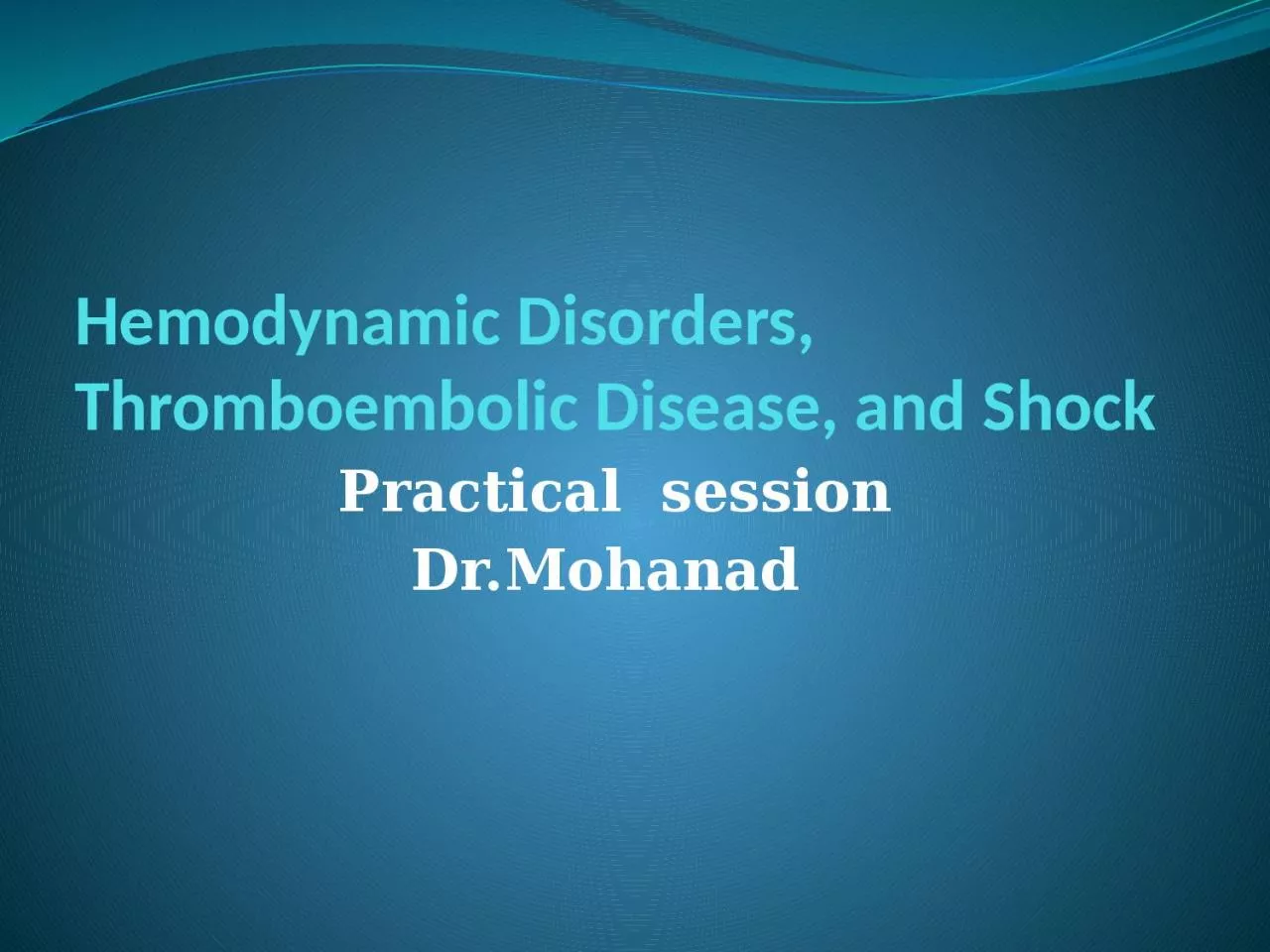

Practical session DrMohanad Total extracellular tissue fluid volume hydrostatic pressure colloid osmotic pressure lymphatic drainage Mechanism of edema formation in heart renal and liver failure ID: 1011550
Download Presentation The PPT/PDF document "Hemodynamic Disorders, Thromboembolic Di..." is the property of its rightful owner. Permission is granted to download and print the materials on this web site for personal, non-commercial use only, and to display it on your personal computer provided you do not modify the materials and that you retain all copyright notices contained in the materials. By downloading content from our website, you accept the terms of this agreement.
1. Hemodynamic Disorders, Thromboembolic Disease, and ShockPractical sessionDr.Mohanad
2.
3. Total extracellular tissue fluid volume = hydrostatic pressure – [colloid osmotic pressure + lymphatic drainage]
4. Mechanism of edema formation in heart , renal and liver failure
5.
6.
7. Pitting Edema
8. Peri-orbital edema in nephrotic syndrome
9. Hyperemia & Congestion
10. Liver with chronic passive congestion and hemorrhagic necrosis
11. Acute pulmonary edema
12. Chronic pulmonary congestion
13. HEMORRHAGE
14. Minute 1- to 2-mm hemorrhages into skin, mucous membranes, or serosal surfaces are called petechiae . These are most commonly associated with locally increased intravascular pressure, low platelet counts (thrombocytopenia), or defective platelet function (as in uremia).Slightly larger (≥3 mm) hemorrhages are called purpura. These may be associated with many of the same disorders that cause petechiae or can be secondary to trauma, vascular inflammation (vasculitis), or increased vascular fragility
15.
16. Sequence of events in normal hemostasis
17. Rudolf Ludwig Carl VirchowGerman1821-1902-Coined the terms of thrombosis and embolism -Known as the father of modern pathology and the pope of Medicine
18.
19. turulencestasis
20.
21.
22. Fate of thrombus
23. Saddle embolus
24.
25.
26.
27.